Archives
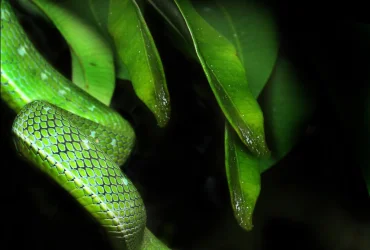 v11i2.290
v11i2.290ISSN: 1800-427X (printed)
eISSN: 1800-427X (online)
DOI:10.47605/tapro.v11i2.290
Submitted date: 20 March 2022
Accepted date: 29 October 2022
Published date: 22 November 2022
Pp. 109–110, Pl. 34.
Biofluorescence in the masked palm civet (Paguma larvata)
A. Borzée* & Z.Q. Wang
*Corresponding author. E-mail: amaelborzee@gmail.com
Biofluorescence has come to general public attention over the last decade with the industrial production of “black lights”. While numerous reports on biofluorescence have become available for some groups of species such as invertebrates, birds, amphibians, and reptiles, there are fewer reports on fluorescence in mammals. So far, ultraviolet fluorescence is known from a few mammal species only, including flying squirrels, mice, Chinese pangolins, Virginia opossums and other didelphid marsupials, springhares, African pygmy hedgehogs, European hedgehogs, and platypuses. The fluorescence is, however, not produced by the animal itself in the case of hedgehogs, but by commensal bacteria. Green fluorescence can also be expressed by transgenic animals, including non-human primates, and the trait can become inheritable.
Section Editor: Lee Harding
eISSN: 1800-427X (online)
DOI:10.47605/tapro.v11i2.290
Submitted date: 20 March 2022
Accepted date: 29 October 2022
Published date: 22 November 2022
Pp. 109–110, Pl. 34.
Biofluorescence in the masked palm civet (Paguma larvata)
A. Borzée* & Z.Q. Wang
*Corresponding author. E-mail: amaelborzee@gmail.com
Biofluorescence has come to general public attention over the last decade with the industrial production of “black lights”. While numerous reports on biofluorescence have become available for some groups of species such as invertebrates, birds, amphibians, and reptiles, there are fewer reports on fluorescence in mammals. So far, ultraviolet fluorescence is known from a few mammal species only, including flying squirrels, mice, Chinese pangolins, Virginia opossums and other didelphid marsupials, springhares, African pygmy hedgehogs, European hedgehogs, and platypuses. The fluorescence is, however, not produced by the animal itself in the case of hedgehogs, but by commensal bacteria. Green fluorescence can also be expressed by transgenic animals, including non-human primates, and the trait can become inheritable.
Section Editor: Lee Harding
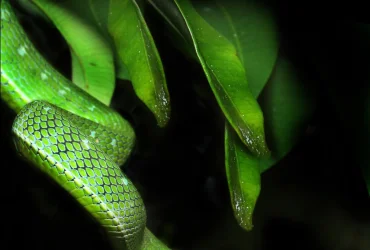 v11i2.289
v11i2.289ISSN: 1800-427X (printed)
eISSN: 1800-427X (online)
DOI:10.47605/tapro.v11i2.289
Submitted date: 29 May 2022
Accepted date: 29 October 2022
Published date: 22 November 2022
Pp. 107–108.
Northernmost distribution of Indian brown mongoose (Herpestes fuscus)
N. Singh*, R. Govekar & A. Pathak
*Corresponding author. E-mail: nishanicky1210@gmail.com
The Indian brown mongoose, Herpestes fuscus is among the six species of mongoose found in India. The species can be distinguished from other species of mongoose by its dark brown fur, black legs and thick, furry and conical tail. Brown mongoose has a restricted and disjunct distribution, with two populations of the nominate H. f. fuscus in the Western Ghats (Karnataka and Kerala) in Southern India and three other subspecies along the western coast of Sri Lanka. In southern India, brown mongoose has been recorded in wet evergreen forests of the Western Ghats from altitudes ranging between 450 to over 2,000 m a.s.l. Recently it has been recorded from Tadoba-Andheri Tiger Reserve, about 160 km south of Pench, also in Maharashtra.
Section Editor: Lee Harding
eISSN: 1800-427X (online)
DOI:10.47605/tapro.v11i2.289
Submitted date: 29 May 2022
Accepted date: 29 October 2022
Published date: 22 November 2022
Pp. 107–108.
Northernmost distribution of Indian brown mongoose (Herpestes fuscus)
N. Singh*, R. Govekar & A. Pathak
*Corresponding author. E-mail: nishanicky1210@gmail.com
The Indian brown mongoose, Herpestes fuscus is among the six species of mongoose found in India. The species can be distinguished from other species of mongoose by its dark brown fur, black legs and thick, furry and conical tail. Brown mongoose has a restricted and disjunct distribution, with two populations of the nominate H. f. fuscus in the Western Ghats (Karnataka and Kerala) in Southern India and three other subspecies along the western coast of Sri Lanka. In southern India, brown mongoose has been recorded in wet evergreen forests of the Western Ghats from altitudes ranging between 450 to over 2,000 m a.s.l. Recently it has been recorded from Tadoba-Andheri Tiger Reserve, about 160 km south of Pench, also in Maharashtra.
Section Editor: Lee Harding
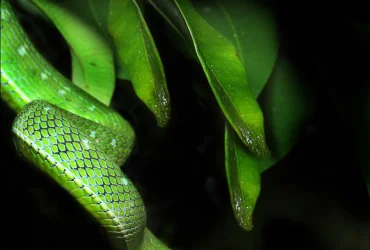 v11i2.288
v11i2.288ISSN: 1800-427X (printed)
eISSN: 1800-427X (online)
DOI:10.47605/tapro.v11i2.288
Submitted date: 9 March 2022
Accepted date: 29 October 2022
Published date: 22 November 2022
Pp. 103–106, Pl. 33.
Nest fidelity of purple sunbird (Cinnyris asiaticus) on communal webs of a spider
P. Selvaraj* & S. Kamalanathan
*Corresponding author. E-mail: prachemist@gmail.com
Nest predation is a major cause of avian breeding failure and parent birds adopt various anti-nest predation strategies to increase the survival rate of offspring. Purple sunbird uses snake moults as nest-building material, which could be a tactic to avoid predation of eggs and hatchlings inside the nest.
Section Editor: Sumudu Fernando
eISSN: 1800-427X (online)
DOI:10.47605/tapro.v11i2.288
Submitted date: 9 March 2022
Accepted date: 29 October 2022
Published date: 22 November 2022
Pp. 103–106, Pl. 33.
Nest fidelity of purple sunbird (Cinnyris asiaticus) on communal webs of a spider
P. Selvaraj* & S. Kamalanathan
*Corresponding author. E-mail: prachemist@gmail.com
Nest predation is a major cause of avian breeding failure and parent birds adopt various anti-nest predation strategies to increase the survival rate of offspring. Purple sunbird uses snake moults as nest-building material, which could be a tactic to avoid predation of eggs and hatchlings inside the nest.
Section Editor: Sumudu Fernando
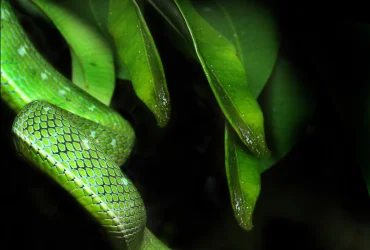 v11i2.287
v11i2.287ISSN: 1800-427X (printed)
eISSN: 1800-427X (online)
DOI:10.47605/tapro.v11i2.287
Submitted date: 16 March 2022
Accepted date: 29 October 2022
Published date: 22 November 2022
Pp. 99–102, Pl. 32.
The herpetofauna in Sarpang District, Bhutan
J. Tenzin*, S. Nidup, G. Gyeltsen, T. Tshomo, A. Nepal & J.T. Wangyal
*Corresponding author. E-mail: jigmetenzin16@gmail.com
Although several checklists exist of herpetofauna in Bhutan, these are based on citizen science data or report the diversity of individual regions and published records are lacking for many areas. Like the country as a whole, there is no formal checklist or report for Sarpang District despite the fact that most of this district is encompassed within three protected areas namely Royal Manas National Park, Jigme Singye Wangchuck National Park, and Phibsoo Wildlife Sanctuary.
Section Editor: Sanjaya K. Bandara
eISSN: 1800-427X (online)
DOI:10.47605/tapro.v11i2.287
Submitted date: 16 March 2022
Accepted date: 29 October 2022
Published date: 22 November 2022
Pp. 99–102, Pl. 32.
The herpetofauna in Sarpang District, Bhutan
J. Tenzin*, S. Nidup, G. Gyeltsen, T. Tshomo, A. Nepal & J.T. Wangyal
*Corresponding author. E-mail: jigmetenzin16@gmail.com
Although several checklists exist of herpetofauna in Bhutan, these are based on citizen science data or report the diversity of individual regions and published records are lacking for many areas. Like the country as a whole, there is no formal checklist or report for Sarpang District despite the fact that most of this district is encompassed within three protected areas namely Royal Manas National Park, Jigme Singye Wangchuck National Park, and Phibsoo Wildlife Sanctuary.
Section Editor: Sanjaya K. Bandara
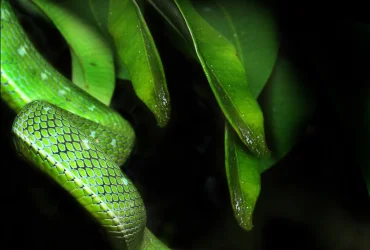 v11i2.286
v11i2.286ISSN: 1800-427X (printed)
eISSN: 1800-427X (online)
DOI:10.47605/tapro.v11i2.286
Submitted date: 9 March 2022
Accepted date: 29 October 2022
Published date: 22 November 2022
Pp. 97–98.
First record of spottedsail barb (Pethia phutunio) from Maharashtra, India
G.A. Shinde*, B.S. Devare & K.R. Tayade
*Corresponding author. E-mail: gauravshinde22@gmail.com
Fishes of the cyprinid genus Pethia are diagnosed from other cyprinid genera by a suite of characters that includes small adult size (usually less than 50 mm standard length (SL), exceptionally up to 80 mm SL), absence of rostral barbels, absence or rudimentary maxillary barbels, last unbranched dorsal-fin ray stiff and serrated, 3 to 4 unbranched and 8 branched dorsal-fin rays, 3 unbranched and 5 branched anal-fin rays, lateral line complete, interrupted or incomplete with 19–24 scales in lateral series, and a unique color pattern consisting of a humeral spot, a black blotch on the caudal peduncle, and in some species, black blotches, spots or bars on the body. Pethia are distributed throughout South and Southeast Asia, from Sri Lanka and peninsular India in the west, to Myanmar in the east.
Section Editor: Upali S. Amarasinghe
eISSN: 1800-427X (online)
DOI:10.47605/tapro.v11i2.286
Submitted date: 9 March 2022
Accepted date: 29 October 2022
Published date: 22 November 2022
Pp. 97–98.
First record of spottedsail barb (Pethia phutunio) from Maharashtra, India
G.A. Shinde*, B.S. Devare & K.R. Tayade
*Corresponding author. E-mail: gauravshinde22@gmail.com
Fishes of the cyprinid genus Pethia are diagnosed from other cyprinid genera by a suite of characters that includes small adult size (usually less than 50 mm standard length (SL), exceptionally up to 80 mm SL), absence of rostral barbels, absence or rudimentary maxillary barbels, last unbranched dorsal-fin ray stiff and serrated, 3 to 4 unbranched and 8 branched dorsal-fin rays, 3 unbranched and 5 branched anal-fin rays, lateral line complete, interrupted or incomplete with 19–24 scales in lateral series, and a unique color pattern consisting of a humeral spot, a black blotch on the caudal peduncle, and in some species, black blotches, spots or bars on the body. Pethia are distributed throughout South and Southeast Asia, from Sri Lanka and peninsular India in the west, to Myanmar in the east.
Section Editor: Upali S. Amarasinghe
Hubungi Kami
The ultimate aim of the journal is to provide an effective medium for communication of the latest and best scientific information.
Copyright © 2020 Taprobanica. All Rights Reserved
Jasa Pembuatan Website by IKT




